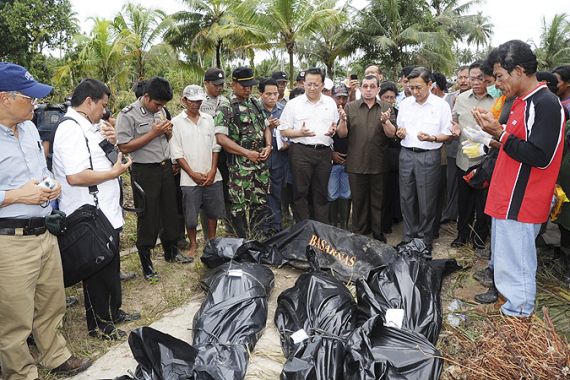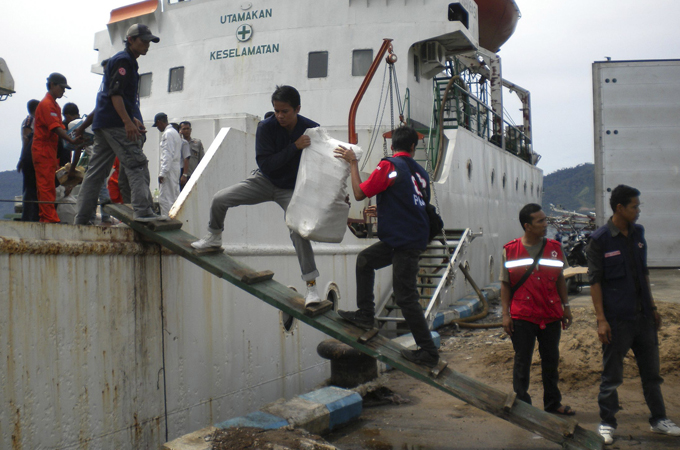Indonesia tsunami death toll soars
Number of dead reaches 369 as questions are raised about the failure of an early tsunami warning system.

 |
| The Indonesian Red Cross joined the relief effort, loading supplies for the tsunami-hit Mentawai islands [Reuters] |
The death toll from Indonesia’s tsunami has soared to at least 369 with 338 others missing, as questions mount over whether an elaborate tsunami warning system off the country’s western coast had failed.
Susilo Bambang Yudhoyono, Indonesia’s president, headed on Thursday to the disaster zone, where fears were growing for hundreds still missing following Monday’s tsunami.
Keep reading
list of 4 itemsWorld’s coral reefs face global bleaching crisis
Why is Germany maintaining economic ties with China?
Australia’s Great Barrier Reef suffers worst bleaching on record
Three-metre high waves triggered by a powerful earthquake hit the Mentawais, a small group of islands 280km to the northwest of Sumatra, on Monday.
Disaster response officials said bodies were still being found on beaches and coastal areas in the Mentawais, which took the full force of the tsunami as it washed away entire villages.
Ade Edward, a West Sumatra provincial disaster official told AFP news agency that the death toll would climb, possibly by as much as 200.
The National Disaster Mitigation Agency said on its website that 4,000 people had been displaced.
Al Jazeera’s Wayne Hay, reporting from Sikakap on South Pagai island, said official government death toll figures are slightly lower that what local media are reporting.
Broken alarm system
As the magnitude of the disaster became clear, many began asking whether an expensive warning system – established after the massive 2004 Asian tsunami, which killed at least 168,000 people in Indonesia alone – had failed.
Tsunami survivors have said they had almost no warning that the wall of water was bearing down on them, despite a sophisticated network of alarm buoys off the Sumatran coast.
While an official tsunami warning was apparently issued just after the 7.7-magnitude quake, it either came too late or did not reach the communities in most danger.
“There are suggestions that in fact the [early warning system] has never worked properly since 2004,” our correspondent said.
One survivor, Borinte, a 32-year-old farmer, said the wave slammed into his community on North Pagai island only 10 minutes after residents had felt the quake.
“About 10 minutes after the quake we heard a loud, thunderous sound. We went outside and saw the wave coming. We tried to run away to higher ground but the wave was much quicker than us,” he told the AFP news agency on Wednesday.
He said he managed to stay alive by clasping to a piece of wood. His wife and three children were killed.
Dealing with disaster
The United States and several of Indonesia’s neighbours have pledged help for a nation which often finds itself battling calamity, although Jakarta said it did not see a need for foreign assistance.
Barack Obama, the US president, lived in Indonesia as a boy and is due to return there on an Asian tour next month. Obama voiced his sadness over the deaths and pledged US help.
The Vatican also made appeals for international aid.
Meanwhile, Indonesian vice-president Boediono visited Munte Baru-Baru village, the hardest hit village on Pagai Island, where 88 bodies have been recovered.
Indonesia straddles a region where the meeting of continental plates causes high seismic activity. It has the world’s largest number of active volcanoes and is shaken by thousands of earthquakes every year.
A 7.6-magnitude earthquake last year in Padang killed about 1,100 people, triggered by a 9.3-magnitude quake along the same fault line that caused the 2004 Asian tsunami.